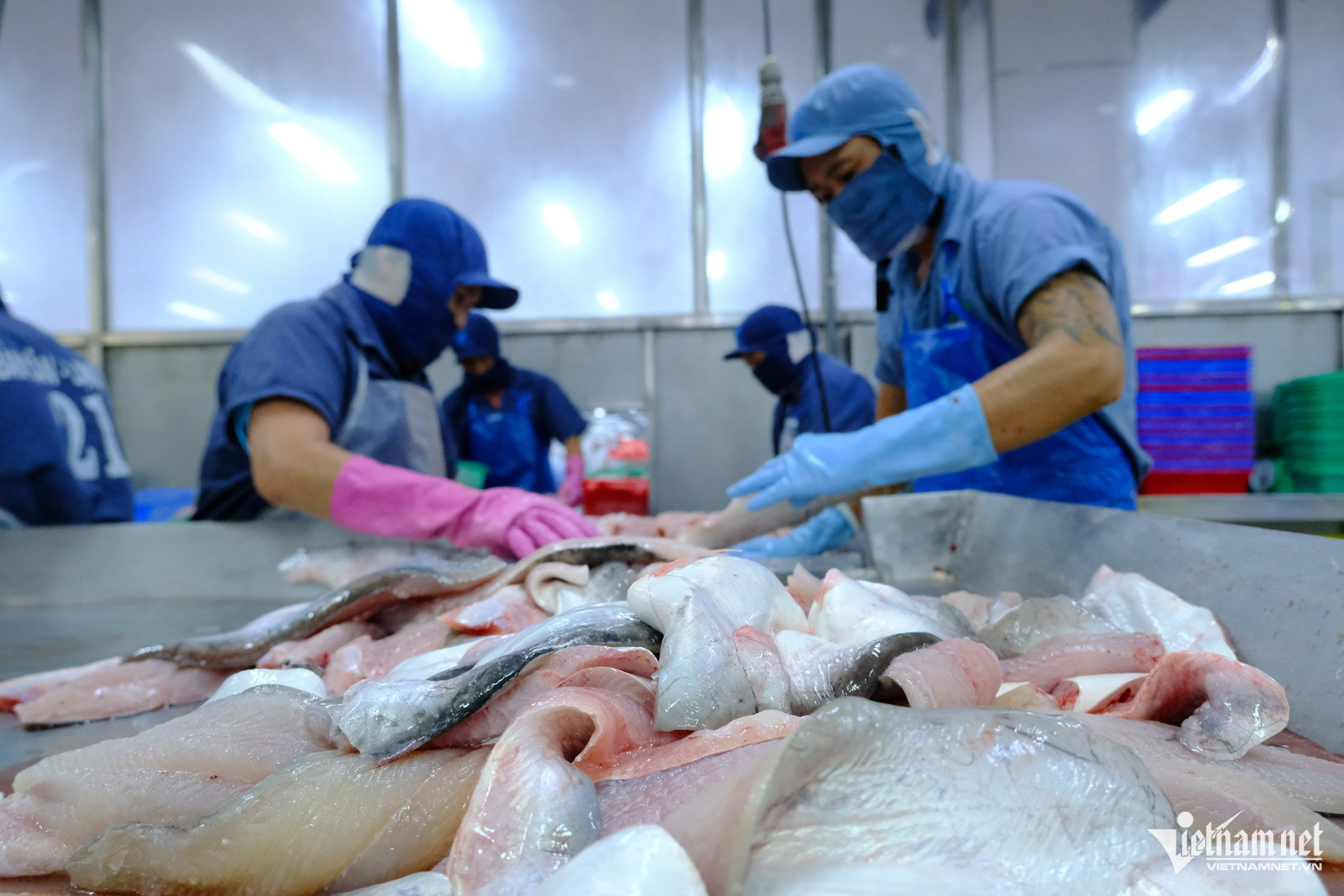
In April, Vietnam’s seafood exports to the U.S. dropped sharply, reflecting the impact of ongoing retaliatory tariffs. The United States, once Vietnam’s largest seafood export market, has now fallen to third place, behind China and Japan.
According to the Vietnam Association of Seafood Exporters and Producers (VASEP), the country’s seafood exports rebounded strongly in the first four months of 2025, reaching a total value of USD 3.3 billion, up 21% from the same period in 2024. In April alone, exports totaled USD 850.5 million, a 10% increase year-on-year.
However, there has been a major shift in key export markets.
China (including Hong Kong) has emerged as Vietnam’s top seafood importer, with imports reaching USD 709.8 million in the first four months, up 56%. During the same period last year, China was Vietnam’s second-largest seafood export market, after the U.S.
In April 2025, seafood exports to China totaled USD 182.3 million, a 29% year-on-year increase. This growth was largely driven by rising demand for shrimp, crab, and mollusks in China’s premium product segment.
Following China, Japan ranked second with seafood imports from Vietnam totaling USD 536.6 million, up 22% year-on-year.
The EU and South Korea also showed promising growth. Exports to the EU reached USD 351.5 million, up 17%, while South Korea imported USD 264.1 million worth of Vietnamese seafood, up 15%.
The U.S., which was the largest market in the first four months of 2024, saw a modest 7% increase this year, reaching USD 498.4 million. However, in April 2025 alone, exports to the U.S. dropped 15%, bringing in only USD 120.5 million.
According to VASEP, the decline reflects the impact of the current U.S. retaliatory tariff policy, which is disrupting Vietnam’s seafood export operations.
Key exports such as pangasius and shrimp, which heavily depend on the U.S. market, are facing serious challenges. The tariffs have raised product costs, prompting American importers to consider alternative sources such as India or Ecuador.
In addition to tariffs, technical barriers like stringent food safety inspections and traceability requirements have weakened Vietnam’s competitive edge in the U.S. market.
Nevertheless, other free trade agreements (FTAs) are helping Vietnamese businesses minimize the damage by expanding into markets such as the EU, Japan, and ASEAN.
In response, many companies are shifting strategies toward high-value-added products and market diversification to reduce reliance on the U.S.
Profit targets lowered, possible U.S. exit on the table
At its annual shareholders’ meeting in mid-April 2025, Ho Quoc Luc, Chairman of the Board of Directors of Sao Ta Foods JSC, stated that in a worst-case scenario where Vietnam faces a 46% tariff while other countries face only 20%, the company may be forced to withdraw from the U.S. market.
The company is still unable to calculate the exact impact on profits in such a case.
In Q1 2025 alone, Sao Ta and its subsidiaries exported more than USD 46 million to the U.S. Including shipments in transit over the past 40 days, this figure could exceed USD 60 million. Accelerating exports before the new tariff policy takes effect has been a risk-mitigation strategy following a 90-day tariff postponement.
If the U.S. market becomes inaccessible, Sao Ta plans to intensify penetration into Canada, Australia, South Korea, and especially Japan. Luc also views China as a highly promising market that the company is monitoring closely for future entry.
Regarding concerns over U.S. tariffs, at the Vinh Hoan Corporation shareholders’ meeting (a major pangasius exporter), CEO Nguyen Ngo Vi Tam said the company has carefully assessed the impact of retaliatory duties on profitability.
Currently, demand from U.S. clients remains stable, with buyers urging the company to accelerate the growth of large fish to meet export needs. As a result, Vinh Hoan sees no reason to withdraw from the U.S. and intends to maximize the 90-day tariff delay by boosting exports.
That said, under its 2025 baseline plan, Vinh Hoan targets VND 1 trillion (USD 38.8 million) in profit, down from VND 1.226 trillion (USD 47.6 million) in 2024.
VASEP forecasts a strong shift in Vietnam’s seafood exports in May and June 2025, ahead of the new U.S. tariff policy taking effect on July 9.
Vietnamese exporters are expected to ramp up shipments to the U.S., especially for core products like shrimp and pangasius, to take advantage of the pre-tariff period. Export value to the U.S. could rise 10-15% over April 2025, driven by expedited contracts and discount strategies aimed at preserving market share.
Meanwhile, exports to other markets like China and ASEAN may stagnate, growing just 3-5% due to intensified competition from Chinese seafood products redirected from the U.S. to domestic and regional markets.
This competition could dampen the appeal of Vietnamese products, particularly in the low-cost segment. The EU and Japan are expected to maintain steady growth of 8-10%, though this may not fully offset the slowdown in China and ASEAN.
Tam An